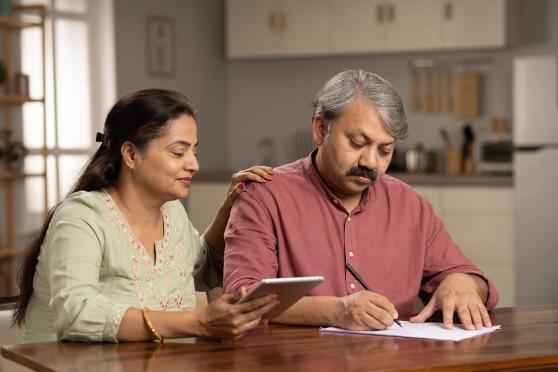Quiz: Do you know the signs of a heart attack?
Fast action saves lives, but you’ve got to know what you’re looking for.

We’ve all seen the movie version of a heart attack—the crushing pain, the splayed hand clutching the chest, the grimace, the collapse. It’s very dramatic but oftentimes not at all realistic. (Sorry, Hollywood.) According to the American Heart Association, minutes really do matter when a heart attack strikes, so it’s important to know what symptoms warrant an emergency call.
If you just suspect someone is having a heart attack, call 911 right away, even if you’re not sure. Ambulance personnel can get the patient to the hospital faster, begin treatment on the way, and ensure that the person is admitted quickly when they arrive. By calling 911, your loved one can have treatment up to an hour sooner than if you’d jumped in the car. And it could save their life.
Here’s a quick way to test your knowledge and maybe learn something new.
Q: True or false: Most heart attacks involve a sudden onset of intense chest pain.
A: False. Though chest pain or discomfort is the most common sign, most heart attacks begin slowly, and symptoms can range from mild to intense. Milder symptoms are more common in women, older adults, and people with diabetes. Some people don’t have symptoms at all.
Q: What chest-area symptoms are associated with most heart attacks? (You can choose more than one.)
a. Discomfort in the center of the chest or toward the left side
b. Discomfort that lasts more than a few minutes or is on and off
c. Feelings of pressure or squeezing
d. Feelings of fullness or pain
A: All of the above. Mild or severe versions of any of these can signal a heart attack.
Q: True or false: Nausea, vomiting, pain above the navel, and cold sweats are signs of the stomach flu, not a heart attack.
A: False. Symptoms of a heart attack aren’t always limited to the chest area. Signs can include those listed above, as well as pain or discomfort in the jaw, neck, back, shoulder, or one or both arms. Some people experience lightheadedness and shortness of breath, with or without chest pain, when active or at rest.
Q: Which of these statements is not true regarding women’s heart attacks?
a. Women always have the exact same symptoms as men.
b. Feeling tired for no reason is a symptom more common in women than in men.
c. Women often mistake heart attack symptoms as signs of stress or exhaustion.
d. A woman having a heart attack is more likely than a man to have abdominal pain or heartburn.
A: A is not true, but the others are. Women can experience the same symptoms as men, but they may not. Many women don’t have chest pain at all. They are also more likely than men to experience dizziness and fainting, shortness of breath, nausea or vomiting, and pain in their back or jaw. Heart disease is the number-one killer of women, so it’s important for both genders to know all of the possible signs.


